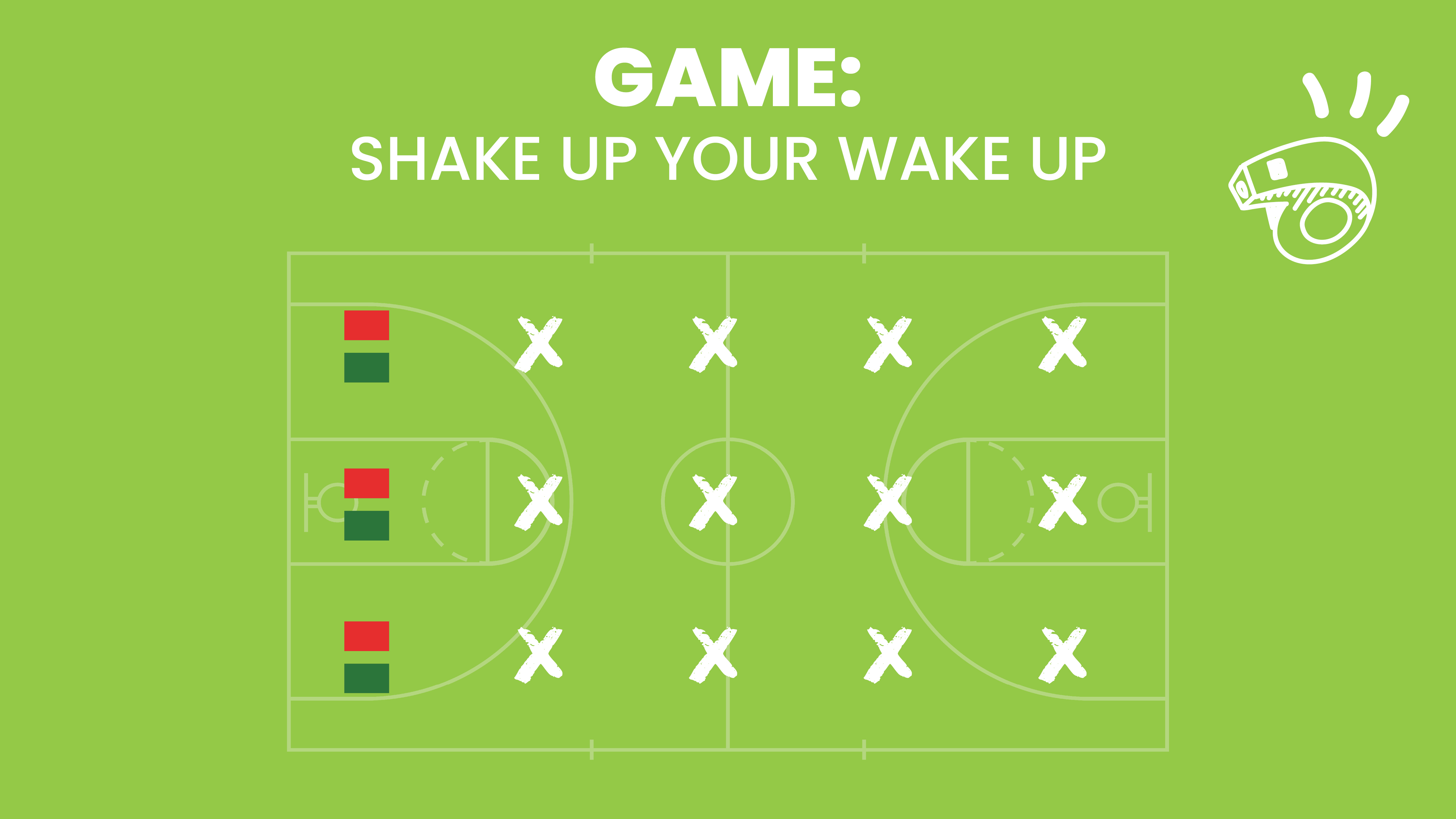Shake Up Your Wake Up
Toss beanbags to hit targets showing nutritious food choices to eat for breakfast.

Game
Toss beanbags to hit targets showing nutritious food choices to eat for breakfast.

Power your day with nutritious breakfast choices.
Learners form a large circle. Identify a center line that divides the circle into two sides. If a learners prefers the first option they move to the left side of the center line. If a learner prefers the second option, they move to the right side of the center line. This forms a side-to-side line facing the other options side. After each question, learners return to their place in the circle. Emphasize "eat more," "eat some," and "eat less" as you read the following questions:
After you wake up in the morning, would you rather drink more milk or eat more bananas for breakfast?
After you wake up in the morning, would you rather drink some orange juice or eat some strawberry yogurt for breakfast?
After you wake up in the morning, would you rather eat less cupcakes or less candy for breakfast?
Teacher note: Refer to the Red-Light, Yellow-Light and Green-Light Foods article for background information on the stoplight tool and Eat More, Eat Some, Eat Less food categories.
Breakfast is an important meal! Your breakfast food choices give your body and brain energy to power through your day.
What are some of the food choices you make for breakfast? (Allow learners to answer.)
Most people only think of “breakfast food” for a morning meal, but what’s most important is you choose nutritious foods for breakfast. You can eat things like chicken, or vegetables, or even tuna for breakfast! Try adding chicken and veggies into your omelet or put some tuna on a piece of whole grain toast.
The number one thing you need to know is eating nutritious foods for breakfast gives your body and brain the fuel they need to go, grow, and know all day long!
Today we are going to learn about nutritious foods. Before we begin it’s important to know that no foods are good or bad, some just provide more nutrition than others! We will use a stoplight to help us. Green-light foods are the most nutritious and can be eaten at any time and provide your body and brain with the most fuel. Yellow-light foods have some nutrition, but not as much as green-light foods do so choose these sometimes. Red-light foods have the lowest nutritional value for your brain and body, so choose these less throughout the day. Remember that green-light foods will give your body and brain fuel to power through your day!
*Modify game for children in grades 3-5 to include yellow-light, "Eat Sometimes" foods. Each team will need a green, yellow, and red spot for their final toss.
Q: Today, I was a health helper who helped you learn more about “Eat More” breakfast food choices. Can you name some other health helpers who can help you with breakfast choices?
A: Teachers, food-service workers, school staff, parents, or trusted adults.
Q: What are some of your favorite breakfast foods? What are some new foods you can try for breakfast?
A: Listen for examples of fruits, vegetables, whole grains, proteins, dairy, or water.
Q: How would you describe “Eat More” green-light foods to a friend?
A: "Eat More” foods are the best choice to power your body. They include fruits, vegetables, whole grains, proteins, dairy, or water.
Q: Name a food you will choose at breakfast to shake up your wake up!
A: Assess learners’ examples of nutritional options for breakfast. Do they identify green-light fruits, vegetables, whole grains, proteins, and dairy? Do they mention water too?
Name at least 3 green-light foods you would eat for breakfast.
Learn about setting short-term goals during a throwing and catching activity.
Play GameIn this PE game, teams do a relay activity to identify MyPlate food groups.
Play GameTeams work together to knock over cones that represent food choices with added sugar.
Play GameWould you Rather? is a fun and engaging physical education game designed to teach learners about healthy choices through movement. The game involves a series of challenges that require students to use various movements and actions to represent different healthy behaviors.
Play Game